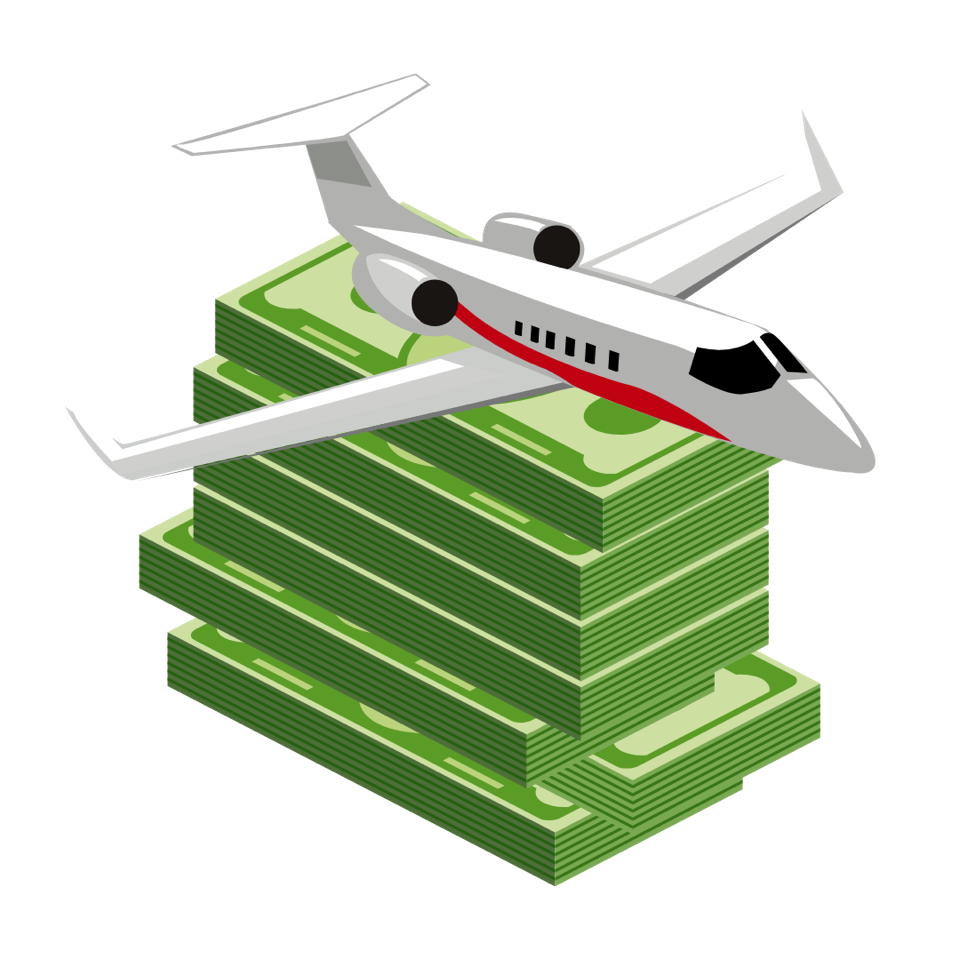Opinion: Growth Hides Mistakes--Why Business Aviation Is Under Pressure

The post-COVID business aviation boom is slowing with rising interest rates, sluggish demand and ongoing labor and supply struggles. While Wheels Up and Jet It are making headlines, multiple sectors of the industry will feel the impact, although they may not yet show it.
Business models that haven’t built up cash reserves, relying on seemingly unlimited demand for their products and services, will be at particular risk over the coming year.
A Glut Of Cash
.
The past few years have been a huge win for the business aviation industry. Eager banks with highly competitive aircraft financing rates, bonus depreciation tax incentives and aging Baby Boomer business owners have fueled high demand for aircraft and ancillary services.
Baby Boomer businesses gained larger-than-ever valuations over the low-interest rate environment of the last few years, driving aging entrepreneurs to sell to eager private equity or corporate buyers. According to Statista, private equity firms invested $1.2 trillion worldwide in 2021, more than double the previous year and the highest year on record. Of those 10,000+ deals, 72% were in the U.S., according to KPMG.
Private equity funds are attracting investors eager for aggressive returns.
In the past, PE-firms would not invest in companies with less than a $100 million in enterprise value, but their investing success has created un-invested cash of more than $1.2 billion according to KPMG, with nowhere for it to go. These firms are now buying smaller and smaller companies and bolting them to other investments, creating a path for business owners to enjoy retirement sooner than ever.
The 2021 business-buying boom leveled back to normal levels in mid-2022, according to PWC, but this white-hot market bled into the business aviation industry quickly.
Tax Implications
While selling a business can be lucrative for an entrepreneur, it also can trigger tax rates of more 40% in the U.S., making the need for tax deferrals or reductions a major concern. Many sellers, as always, have turned to private aircraft to ease the pain of handing Uncle Sam almost half of their hard-earned business value. There are few pieces of equipment worth millions that can be put to work in a business that are as easy to buy, easy to move and as easy to sell as an aircraft.
The 2017 Tax Cuts and Jobs Act created a 100% bonus depreciation rule for both new and used aircraft, as well as other equipment. In the past, accelerated depreciation (MACRS) over a 7-year period existed for new aircraft. But the inclusion of used aircraft and an allowance for full depreciation in the year the aircraft was placed in service was a game changer for the market, providing a bevy of aircraft options for buyers.
This new or used bonus depreciation option created multiple price entry points for buyers to fit their unique needs and an active trading market, with banks eager to finance to those newly flush with cash.
Like the rest of the country, private air carriers also benefitted from government grants, which propped up major airlines and Part 135/91K operations with almost $60 billion in payroll support. Employee retention credits, state & federal business grants, and pent-up demand for business goods and services also added to the cash glut.
While 2021 was a busy year for private aircraft due to COVID infection concerns, a demand driver was the creation of wealth and those looking for a place to spend it and stow cash. This incredible growth for aircraft manufacturers, resellers, charter companies, training centers, repair stations, fixed-base operators, and beyond is now tempering. And the cracks are beginning to show.
Wheels Up and Blade are some of the easiest to see by the sheer fact they are publicly traded. Both firms have dropped in value since going public, compared to the market overall. In April, Flexjet halted plans to go public, while FlyExclusive’s planned SPAC merger has been extended past the May 28th deadline set to complete the business combination, according to SEC filings.
Good News Or The Bad News First?
It makes sense that charter operators will be some of the first to experience market contractions. These firms have the highest costs of capital and the most transactional customer. Fractional, repair organizations, manufacturers, and FBOs will see these dips with a slight delay, as fliers slow down flight hours and service needs or exit long-term agreements.
The bad news is that extreme growth has created market exuberance - the quick and easy availability of cash for investments and new customers have made some businesses less disciplined. The relative ease of making profits with low costs of capital and strong pricing power due to supply shortages has come to an end. While it doesn’t mean the business aviation industry is in free fall, it does mean some firms that weren’t generating strong cash flow and building reserves the last few years are struggling now.
The good news is that macro growth drivers in the industry remain despite the headwinds. While private equity investments have slowed recently, the cash behind them hasn’t and the Baby Boomer generation, the wealthiest generation in history, is aging well beyond their expected retirement years.
The demographic “bulge” created by impending Baby Boomer retirement will likely be a source of continued expansion of the business aviation industry. In addition, business aircraft are more fuel efficient and more technologically advanced than ever, and there is stronger pressure to build low-emission aircraft, which translates to lower operational costs.
The industry will inevitably see more headlines on struggling aviation businesses before the end of 2023, but with flight demand leading pre-pandemic 2019 levels, the market remains cautiously optimistic for organic, controlled growth.
Jessie Naor is the author of the Sky Strategy column in BCA and CEO of FlyVizor, an aviation M&A advisory and business consulting firm. She is a former founder and president of GrandView Aviation.